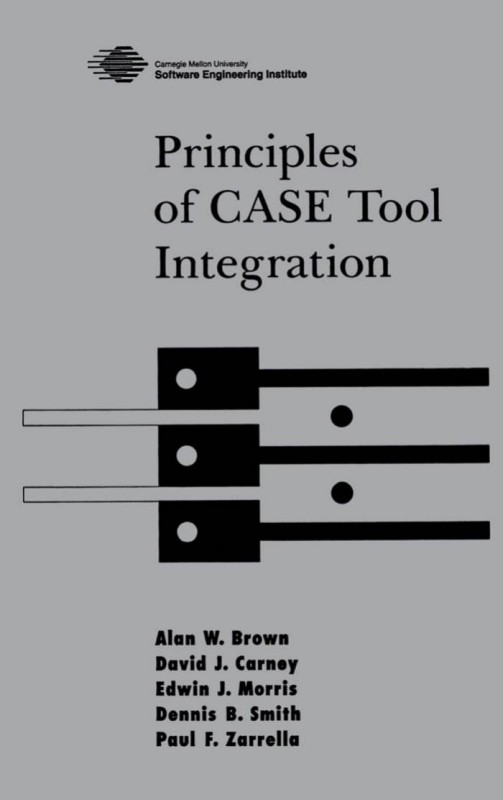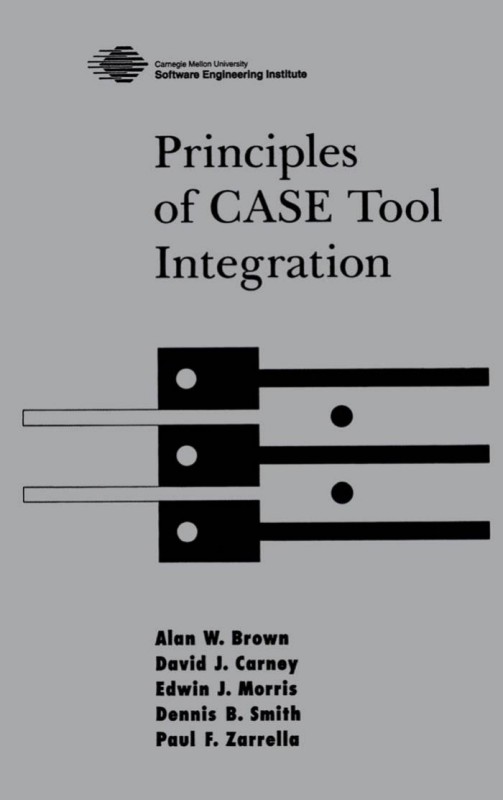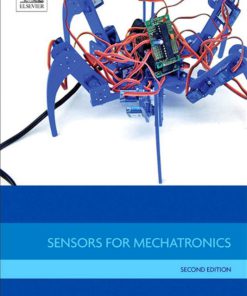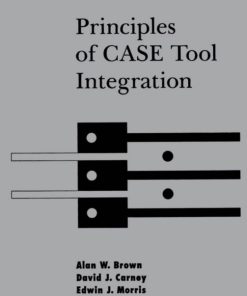Principles of CASE Tool Integration 1st Edition by Alan Brown, David Carney, Edwin Morris, Dennis Smith, Paul Zarrella 0195094786 9780195094787
$50.00 Original price was: $50.00.$25.00Current price is: $25.00.
Authors:Alan W. Brown , Series:Artificial Intelligence [13] , Tags:Religion; Christianity; History , Author sort:Brown, Alan W. , Ids:Google; 9780195094787 , Languages:Languages:eng , Published:Published:May 1994 , Publisher:Oxford University Press , Comments:Comments:Computer Aided Software Engineering (CASE) tools typically support individual users in the automation of a set of tasks within a software development process. Such tools have helped organizations in their efforts to develop better software within budget and time constraints. However, many organizations are failing to take full advantage of CASE technology as they struggle to make coordinated use of collections of tools, often obtained at different times from different vendors. This book provides an in-depth analysis of the CASE tool integration problem, and describes practical approaches that can be used with current CASE technology to help your organization take greater advantage of integrated CASE.
Principles of CASE Tool Integration 1st Edition by Alan Brown, David Carney, Edwin Morris, Dennis Smith, Paul Zarrella – Ebook PDF Instant Download/Delivery. 0195094786, 9780195094787
Full download Principles of CASE Tool Integration 1st Edition after payment

Product details:
ISBN 10: 0195094786
ISBN 13: 9780195094787
Author: Alan W. Brown; David J. Carney; Edwin J. Morris; Dennis B. Smith; Paul F. Zarrella
Computer Aided Software Engineering (CASE) tools typically support individual users in the automation of a set of tasks within a software development process. Such tools have helped organizations in their efforts to develop better software within budget and time constraints. However, many organizations are failing to take full advantage of CASE technology as they struggle to make coordinated use of collections of tools, often obtained at different times from different vendors. This book provides an in-depth analysis of the CASE tool integration problem, and describes practical approaches that can be used with current CASE technology to help your organization take greater advantage of integrated CASE.
Principles of CASE Tool Integration 1st Table of contents:
Part I: The Problem of Integration in a CASE Environment
CHAPTER 1 Introduction
1.1 Introduction
1.2 What Is CASE?
1.3 What Is a CASE Tool?
1.4 What Is a CASE Environment?
1.5 Expectations About CASE and the Need for Tool Integration
1.6 A Hypothetical Example of the Problems of CASE Tool Integration
1.7 Summary
CHAPTER 2 Previous Approaches to Understanding CASE Tool Integration
2.1 Introduction
2.2 Conceptual Models of Integration
2.3 Evolution of Integrated CASE Environment Architectures
2.4 Summary
CHAPTER 3 Toward a Better Understanding of Integration
3.1 Introduction
3.2 A New Conceptual Model of Integration
3.3 Integration as a Design Activity
3.4 Realizing a Federated CASE Environment
3.5 Summary
Part II: Service, Mechanism, and Process Level Integration
CHAPTER 4 A Service-Based Model of a CASE Environment
4.1 Introduction
4.2 Overview of the PSE Reference Model
4.3 Description of Reference Model Services
4.4 Uses of the Reference Model
4.5 Summary
CHAPTER 5 Properties and Types of Integration Mechanisms
5.1 Introduction
5.2 Properties of Integration
5.3 The Relationship Between Data and Control Integration
5.4 Presentation Integration
5.5 Summary
CHAPTER 6 Data Integration Mechanisms
6.1 Introduction
6.2 Key Issues for Data Integration
6.3 Data Persistence
6.4 Semantic Mechanisms for Data Integration
6.5 Other Factors for Data Integration
6.6 Examples of Actual Integration Mechanisms
6.7 Summary
CHAPTER 7 Control Integration Mechanisms
7.1 Introduction
7.2 Integration in a CASE Environment
7.3 The Message Passing Approach
7.4 Examples of the Message Passing Approach
7.5 Discussion
7.6 Summary
CHAPTER 8 The Role of Process in Integrated CASE Environments
8.1 Introduction
8.2 Understanding the Nature of Process Integration
8.3 Process Integration and CASE Tools and Environments
8.4 Examples of Process and CASE Tool Interactions
8.5 Summary
Part III: Practical Experiences with CASE Integration
CHAPTER 9 Experiments in Environment Integration
9.1 Introduction
9.2 The Integration Experiments
9.3 Summary
CHAPTER 10 Replacing the Message Service in a CASE Integration Framework
10.1 Introduction
10.2 Background
10.3 Getting Started
10.4 Adding the ToolTalk Interface
10.5 Running the Experiment Scenario
10.6 Replacing ToolTalk in the Emulation Framework
10.7 Lessons Learned
10.8 Summary
CHAPTER 11 Integration of CASE Tools with CM Systems: Lessons Learned
11.1 Introduction
11.2 Key Concepts Related to CM and CASE Tool Integration
11.3 CASE Tool Integration Scenarios Involving CM
11.4 Summary
Part IV: A Review of the Current State of CASE Tool Integration
CHAPTER 12 CASE Environments in Practice
12.1 Introduction
12.2 Background of the Studies
12.3 Observations
12.4 An Example of a Transitional CASE Environment
12.5 CASE Environment Progress over the Past Decade
12.6 Summary
CHAPTER 13 Summary and Conclusions
13.1 Introduction
13.2 Major Themes Discussed
13.3 How Will Progress Be Made?
13.4 Final Thoughts
References
APPENDIX A: Sample Descriptions of CASE Integration Efforts
APPENDIX B: List of Figures
APPENDIX C: List of Tables
People also search for Principles of CASE Tool Integration 1st:
principles of case management in social work
principles of case management
integrated case tools examples
integrated case tools
You may also like…
eBook PDF
Principles of Esthetic Integration 1st edition by Claude Rufenacht 0867153695 9780867153699
eBook PDF
Sensors for Mechatronics 2nd Edition by Paul Regtien, Edwin Dertien 0128138106 9780128138106












